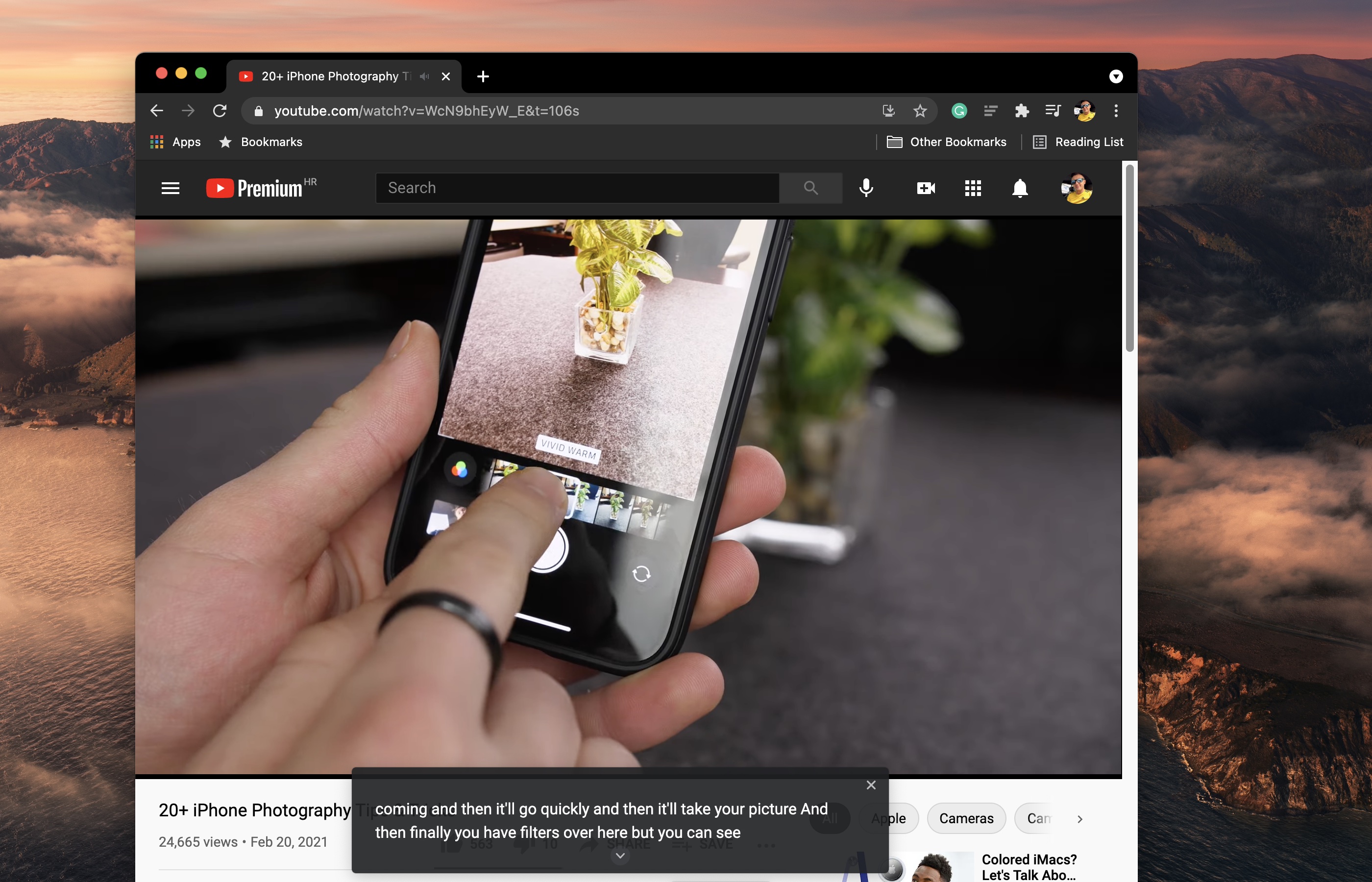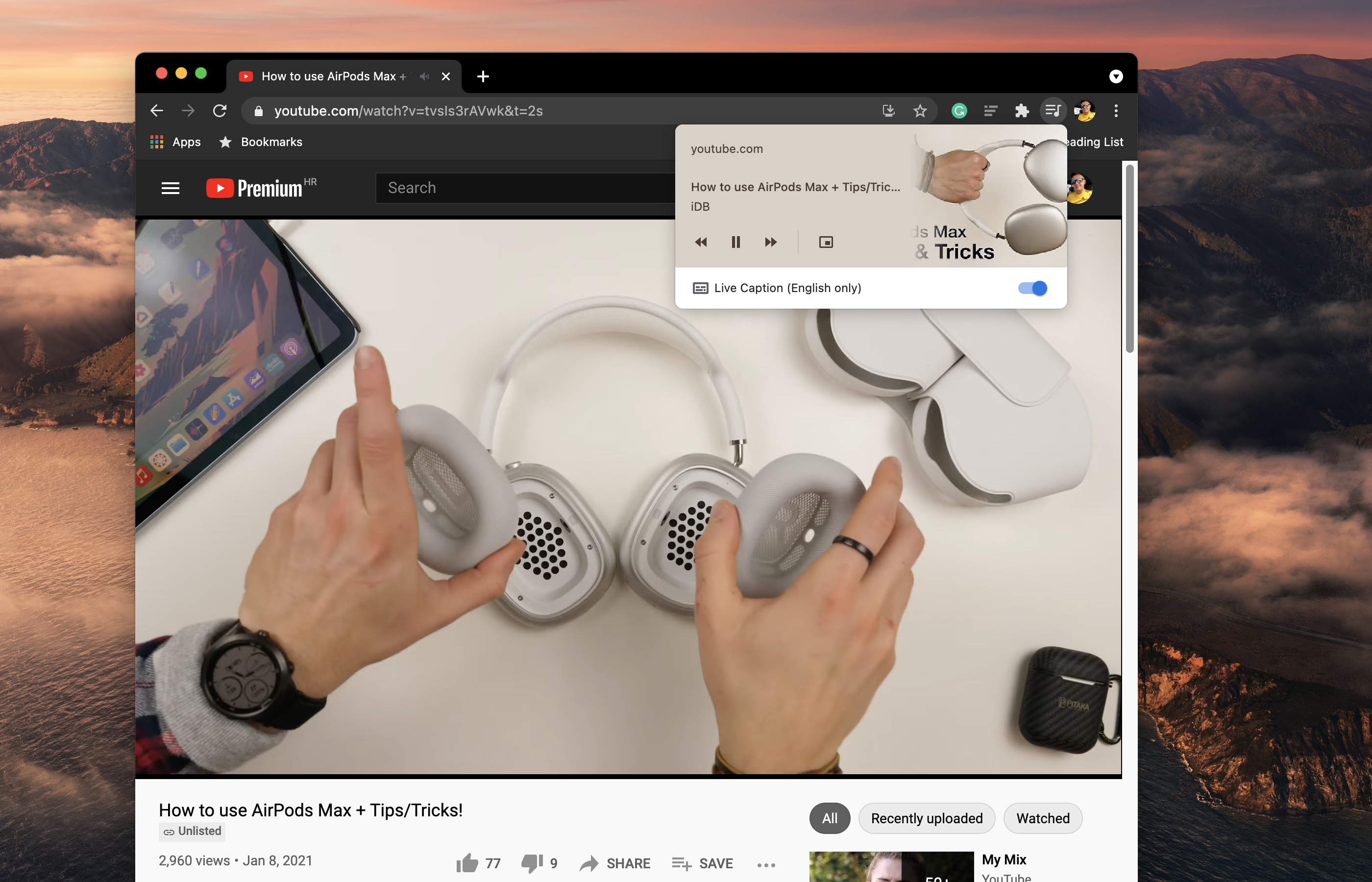Learn how to turn on and use the handy Live Caption feature in Google Chrome to automatically transcribe any audio playing in the browser.

Google Chrome’s Live Caption feature on desktop lets you configure the browser to automatically transcribe any audio or video without having anything sent to the cloud.
Similar to YouTube’s auto-transcription capabilities and real-time captions on some Android phones, the live captions feature in Chrome uses on-device processing to provide real-time audio and video transcription without having to upload anything to the Google cloud.
Be advised that live captions don’t work without hiccups in all situations. That said, however, the feature appears to be reliable enough to be used on an everyday basis. Anyone can use live captions although Google has designed this as an accessibility feature for those with hearing impairments.
Also see: How to use Live Captions during FaceTime calls on iPhone, iPad, and Mac
Turn on Live Caption in Google Chrome
Before you can use this feature, you must manually turn it on in your browser’s accessibility settings.
- Open Google Chrome and click the three dots icon from the upper right corner, followed by Settings.
- Select Accessibility from the left side.
- Turn on the switch for Live Caption.
- Your browser will now download speech recognition files, which are necessary for real-time transcription. Once that’s downloaded, you are ready to use Live Caption. Just make sure your language settings for Live Caption are correct.

Use Live Caption in Chrome
With the speech recognition files downloaded, Chrome will automatically create captions for any English audio or video playing through the browser until you turn the feature back off. To be sure, this works for any audio played through Chrome, including videos, podcasts, voice calls, and more.
Live captions appear in a box that pops up at the bottom of the window.

You can collapse and expand captions by clicking the arrow on the caption box. Likewise, it’s possible to select the captions and move them to your preferred place in Chrome.
Toggle Live Captions on or off in Chrome
Once the Live Caption feature has been enabled and speech recognition data has finished downloading, you can toggle live captions on or off right from Chrome’s toolbar. Simply click the playback controls icon found in the upper-right corner of the window, nested between Chrome’s browser extensions toolbar and your Google Account profile icon. This button only appears when some media is playing in Chrome.
Doing so will produce a popup with a big thumbnail of the media you’re playing, along with its title and other information. At the bottom of this mini-window, you should see the Live Caption button. Click it to toggle live captions on or off on the fly.

Change the Live Caption font size
You can customize live captions in Chrome to make them easier to read by customizing the typeface and font size used for the feature.
- Go to Chrome Accessibility settings and click Caption preferences.
- This will launch your computer’s built-in settings for configuring subtitle options. Simply choose one of the four captioning options on the right-hand side or create a new style that best suits your needs. Any changes to subtitles made here will be applied system-wide on your Mac.
Things to know about Live Caption in Chrome
There are some pros and cons to using this feature, so here’s what you need to know.
- Live captions aren’t just for people with hearing problems—use this feature to follow along to any spoken media without disturbing others by turning up the audio.
- Speech recognition data lets Chrome transcribe any audio or video in real-time, right on your computer, without sending anything to the cloud. “Audio and captions never leave your device,” according to a support document on the Google website.
- You may encounter issues when using the auto-transcription feature in a noisy room. The same goes for using the feature when the audio quality is poor. On top of that, live captions may have trouble recognizing speakers with heavy accents.
- Live captions also work with Progressive Web Apps.
Turn off Live Caption
To turn live captions off for all media, go to Chrome Accessibility settings and turn off Live Caption. Because this toggle is buried deep inside Chrome’s settings, you may want to bookmark chrome://settings/accessibility to get there quicker.
Check out next: How to install, manage, update, and remove Google Chrome extensions